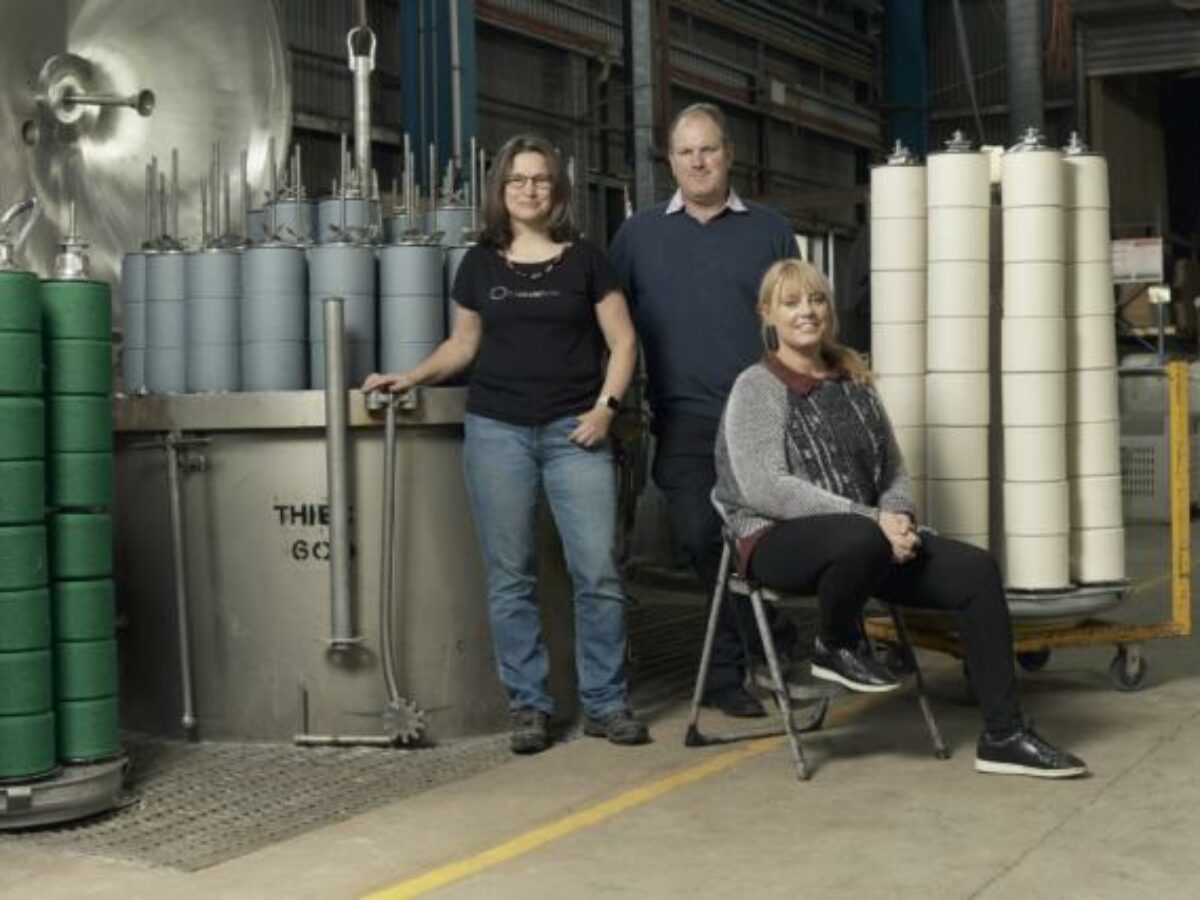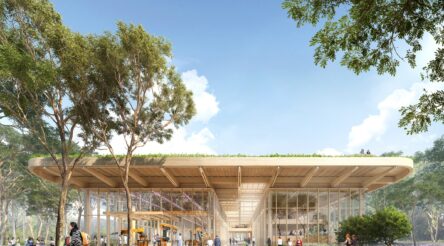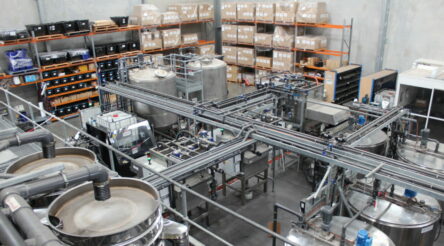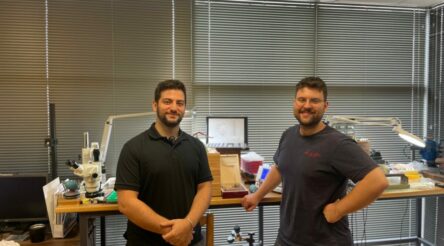Rediscovering our ability to spin a yarn

The textile industry still exists in Australia, but it’s misunderstood and strengthening it will be essential in addressing environmental and social problems. Brent Balinski speaks to Meriel Chamberlin, founder of Full Circle Fibres.
“TCF” is a peculiarly Australian, bureaucratic category for a misunderstood, thrown-together collection of industries, believes Meriel Chamberlin.
“That is such a vast, vast array of product, because we go from… geotextiles, which are massive nonwovens that are generally made from synthetics at the moment. And yes, we have a really successful sector in that here, but we go all the way through to couture,” the textile scientist and founder of Full Circle Fibres tells @AuManufacturing of the first two initials in TCF.
“We have a world-leading fibre growing industry in wool and cotton, but we don’t connect the dots here now. So all of that goes overseas as a commodity.”
She adds that there’s one particular step that gets offshored.
“We can’t spin a yarn here, which is kind of ironic given a nation’s ability to spin a yarn,” says Chamberlin.
It’s a situation familiar to manufacturing boosters working in all corners of the industry: an amount of activity not accurately captured by government abacuses; a large number of small firms, many of them incredibly capable yet toiling away in obscurity; a lot of fragmentation; and a regular need to remind folks that yes, we still do that here.
She cites an EY report finding that the fashion and textile industry contributed $27.2 billion to Australia’s economy in 2020 – 2021, with $7.2 bn in exports.
One of Chamberlin’s hats is Full Circle Fibres, a social enterprise she founded in 2015, and which is dedicated to connecting the textile industry dots in service of circularity. Other roles include Honorary Fellow at University of Melbourne’s School of Mechanical Engineering, and Technical Director at Wear & Care.
Last week a project led by Full Circle Fibres was awarded a $147,000 grant from Country Road’s Climate Fund.
Chamberlin describes the 12-month “Mud to Marle” project as a systems innovation – rather than technical innovation – project, using a blend of second-grade fine merino wool and cotton, mapping out and understanding all the steps of the process from fibre to garment.
“It’s about being really smart with the tools at hand, and then doing it with the end in mind,” she adds.
“We’ve just got started with selecting which colours we’re going to put into the pilot batches at the moment…
“We have to make a product that people will want. Then it’s a bonus that it’s potentially circular or regenerative or whatever. So that’s the really nice thing about partnering with Country Road.
“And the other thing that’s really great about the format of this fund is that essentially this is funding pilot batches that we just commercially need to try.”
A statement from Country Road last week describes the long-term aim of Mud to Marle – which also involves Deakin University, Geelong Textiles, Geelong Dyers, wool grower Ridgehaven and cotton grower Australian Super Cotton – as growing Australian on-shore manufacturing capabilities and circular production systems.
Another “connecting the dots”-type project for Chamberlin is Fibre Foundry, which aims to enable local textile-to-textile recycling.
She estimates the project as needing about $3 million in machinery and about 2,000 square metres in factory space to get off the ground.
According to Chamberlin, her industry is reckoning with the twin problems of modern slavery and being “a massive vehicle of trash” through fast fashion and other disposable products.
It is “a crying shame that this human capability to work together and be creative” has been broken in a race to the bottom on costs.
“The sense of satisfaction from working in manufacturing, creating something, working together as a team, creating something beautiful that people really enjoy: It makes your soul soar,” she adds.
“And again, that goes for all sorts of manufacturing, not just textiles. It’s just [that] I know textiles… And we absolutely have to do this differently. We don’t even have a choice.”
In this episode of @AuManufacturing Conversations with Brent Balinski, Chamberlin tells us about the difficulty of going from test tube to tonnes in R&D, why we need to pay more attention to the doers rather than the ticket clippers when it comes to the circular economy, how Australia is focussed on developing the sovereign capability to kill but not to care, and more.
Episode guide
0:40 – “Yes, we still can make textiles in Australia, although we do have to do one stage overseas…”
1:40 – The work of a textile scientist is everywhere, but rarely considered.2:50 – Technically creative people “exist in all sorts of industries.”
5:10 – The twin problems tied to textile-making around the world: waste and slavery. “And the thing that’s really heartbreaking is… none of that’s necessary.”
7:34 – TCF “a bureaucratic term” particular to Australia.
8:20 – Textiles and related industries are huge in Australia, “but we don’t connect the dots.”
11:40 – Assumptions to do with a soft product and the engineering behind it.
12:40 – Mud to Marle. A project based on systems innovation.
15:25 – Using already-available, scalable technology with an end in mind rather than blue sky research.
17:20 – A 12-month project. Currently selecting colours for pilot batches.
18:06 – The “test tube to tonne” stage in R&D and why bridging this is so important for commercialisation.
19:40 – Some thoughts about scaling, and the issue in circular economy efforts: not enough doers and too many ticket-clippers.
21:15 – There is no remanufacturing without manufacturing. It is critical that existing manufacturers be brought along, because they have the expertise.
22:10 – “We’ve got all this support for research in the circular economy, but we’ll let the manufacturers just die a death of a thousand cuts… It’s like we need to graft the circular economy onto the shrubs and trees of manufacturing. To grow something from seed is so much harder.”
23:10 – Some attitudes that are holding us back.
25:10 – Some of the advisors and experts concerned with innovation in this country should probably be replaced.
26:40 – We can downcycle, but don’t have the ability to do textile-to-textile recycling here. What would it take to fix this? About $3 million and 2,000 square metres.
29:15 – Ending up in a funny no-man’s-land for attracting investment. “This is not a VC-type investment”.
31 – “We can’t make a sandbag or a tarp from scratch in this country.” Why we are “frighteningly at risk” for a lot of essential supply chains.
Picture: Chamberlin; Associate Professor Christopher Hurren, Deakin Institute for Frontier Materials; Sam Yearwood, commercial manager, Geelong Textiles. (Credit: Country Road)
Further reading
Onshore textile manufacturing project among Country Road Climate Fund grant winners
@aumanufacturing Sections
Analysis and Commentary Awards Defence Manufacturing News Podcast Technology Videos










